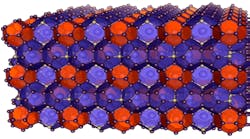GO OR NO GO?
Figure 1. AT BASF, any potential application of reactive distillation must satisfy economic or sustainability thresholds. Source: BASF.
At the same time, the technology does have constraints. “Essentially the reaction and separation have to occur at the same or very similar temperatures, for example. So that limits the window of operation for the technology. However, some of our big successes with reactive distillation have seen as much as a 50%–70% reduction in capital and a 70% reduction in energy used per product manufactured,” adds John Pendergast, research fellow, Performance Materials, Dow Texas Operations, Freeport, Texas.Alongside thermodynamic constraints is the challenge of sunk capital. Pendergast explains: “The existing plants we work with already have reactors and distillation columns. Even if the technology fits, the plant might already be producing and the net capital already sunk. So, we really have to be in the situation where we need a new process to replace an existing one, or a new process to manufacture a new product. We need to develop these processes out in front of the needs so that we can be prepared to respond when the need arises. This is a generally true statement about all of our process synthesis efforts in the sense that we have to know what is possible before the urgent need for a new process arises.”To develop new reactive distillation processes — several more will be onstream in the next five years — Dow carries out a lot of mini-plant (i.e., scaled down) and bench-scale work. “Also, one of the most important developments is in our ability to swiftly simulate potential new processes. The power of modern simulation software continues to grow and make rapid and accurate simulation easier,” notes Pendergast. Reactive distillation gets criticized for failing to live up to its early potential, comments Pendergast. “Some companies have regarded reactive distillation as if it is a hammer looking for a nail. It is much better to find a new place where it brings value rather than putting it up against the economics and sunk costs, etc., that you already have. We are most successful when there is a need and a solid value proposition, not when we are pushing the technology,” he says.“Dow is a very large company with lots of different products and processes, so there are many opportunities to apply reactive distillation in different situations. But, in the great majority of cases, what you do need is an equilibrium-limited reaction. Remember, too, that reactive distillation is the most common form of reactive separation, but there are other ways we can practice reactive separation as well. However, when it is successfully applied, it is one of the most powerful game-changers out there. The manufacture of methyl acetate, for example, is the poster child for reactive distillation,” notes Frank.
PROCESS OPTIMIZATION TOOLFor
BASF, reactive distillation is an important option when it comes to process optimization. “BASF has therefore spent considerable efforts on the development of this technology, for instance in public joint ventures such as the EU [European Union] INSERT (INtegrating SEparation and Reactive Technology) project,” says Regina Benfer of the company’s Department of Chemical and Process Engineering, Ludwigshafen, Germany. INSERT focuses on developing new ways to integrate reaction and separation processes in such a way that they outperform existing technologies.“Today, there are numerous commercial processes in BASF using reactive distillation. Typical reactions involved are esterifications, transesterifications or hydrolysis of esters, acetalizations and hydrolysis of acetals as well as etherifications. In most cases, homogenous or autocatalysis is applied; in few cases we use heterogenous catalysis too,” she adds.BASF — sometimes in cooperation with manufacturers of column internals — has developed and patented special packings and reaction trays for both types of catalyzed reactions. For example, one is designed specifically to ensure a long residence time combined with good mixing performance for the liquid phase. Another is used with heterogenous reactive distillations.Any new or improved process always has to meet economic or sustainability thresholds (Figure 1). “That is also true for the application of reactive distillation. Savings based on this technology are mostly a consequence of minimized energy and raw material costs, but also as a result of improvements in waste water or offgas management,” says Carsten Knösche, also with the Department of Chemical and Process Engineering in Ludwigshafen.“The development of a reactive distillation process requires a very thorough investigation of the physico-chemical system involved both in laboratory and pilot-plant scale. It is of essential importance for success that an appropriate model can be developed, which describes both reaction and distillation in the concentration range relevant for the process. The necessary depth of modeling may be very different depending on the system,” he explains. BASF has patented an individual distillation and reaction tray for use with laboratory experiments. The company also has published a number of articles covering different aspects of reactive distillation, including the synthesis of n-hexylacetate, modeling of a particular physico-chemical system, and a basic approach for the analysis of reaction distillation processes.“BASF permanently monitors the market for new developments in reactive distillation, for instance being published in conferences, journals or patents. Interesting concepts are regularly evaluated. Thereby, a special focus is on raw material change and on renewable resources. In principle, all kinds of process optimization and intensification measures can be used in this field of application. Of course, reactive distillation can be an attractive alternative, provided that the process conditions for reaction and distillation fit together and an economic or ecological advantage is achieved,” concludes Benfer.
NEW PROCESSEastman Chemical, Kingsport, Tenn., was an early adopter of reactive distillation, starting up in 1983 a unit designed to significantly simplify the production of methyl acetate. And the company’s interest in the technology continues, judging by a November 2013 application for a U.S. patent.That application discloses a process for making glycolate ester oligomers that suit a subsequent hydrogenation reaction to produce ethylene glycol.The process reacts ethylene glycol and glycolic acid to make glycolate-ester and glycolic-acid oligomers while simultaneously removing water also produced. Eastman notes the presence of water is undesirable for at least two reasons; first, the esterification reactions are equilibrium limited, so removal of water favors the formation of glycolate ester oligomers; and, second, water deactivates the hydrogenation reaction catalyst in the process for making ethylene glycol. (The hydrogenation itself produces one mole of water for each mole of glycolic-acid and glycolic-acid oligomers — i.e., acid-ends — in the feed.)The application notes: “There is a need in the industry to esterify glycolic acid such that the product stream has a limited amount of total moles of water plus acid-ends. There is also a need to produce glycolate ester oligomers for hydrogenation in a manner that is more economical in the overall process for producing ethylene glycol from glycolic acid.”Eastman refuses to expand on its new application or existing reactive distillation work. A spokeswoman only would say that the company sees value in developing technology around reactive distillation.
UNREALIZED POTENTIAL?For
Sulzer Chemtech, Allschwil, Switzerland, reactive distillation hasn’t yet lived up to its early potential. “There’s no doubt that reactive distillation brought a lot of hope in the 1990s and into the early 2000s because of promising features such as the ability to push an equilibrium reaction close to the full conversion. But it hasn’t been the major success that was expected at the time. Reactive distillation can be less flexible than conventional processes, for example in terms of pressure and temperature ranges. Combining the operating windows of the reaction and distillation typically results in a narrower range of operation,” explains Laurent Zuber, director, Technology and Business Development, Process Technology.






